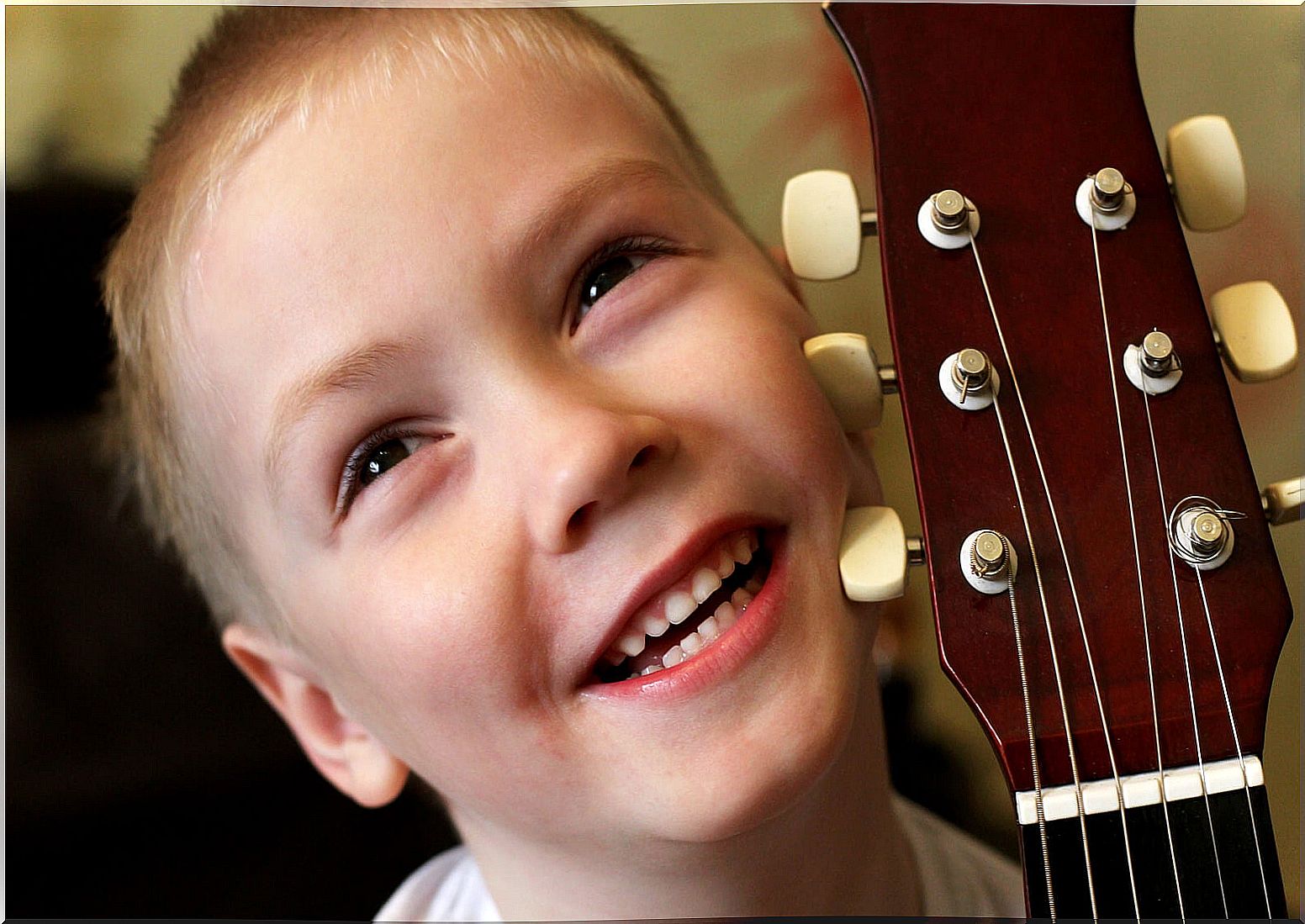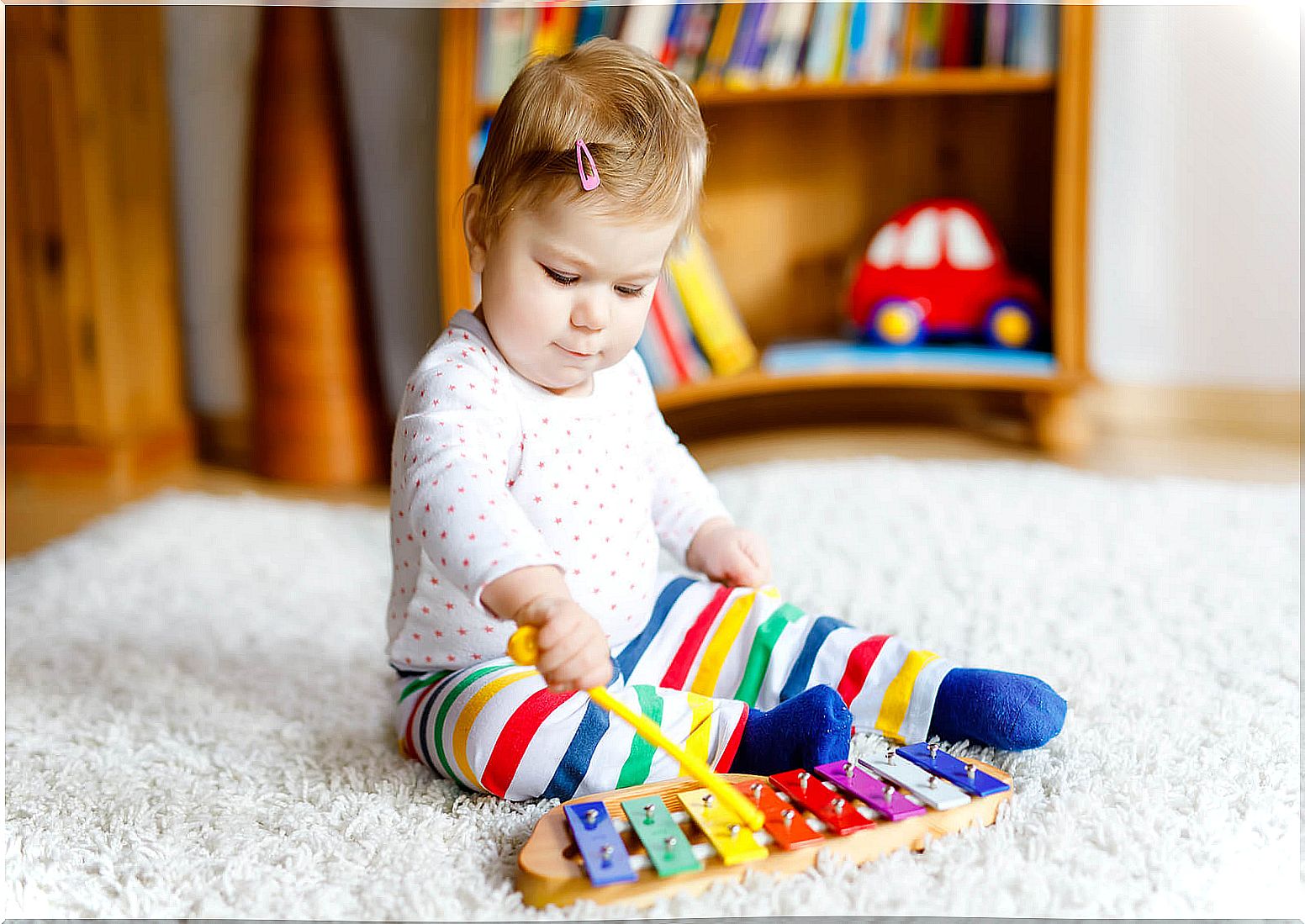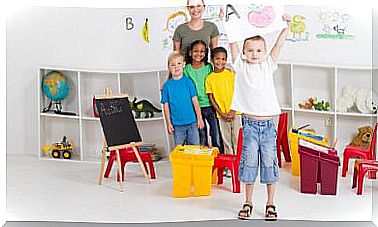3 Easy Music Games For Toddlers

Normally, children love music, because they have a great time with it and they enjoy it like never before. Therefore, if you have small children at home, you will be interested in learning some easy music games. You can all have a great time together and, in addition, the children will enjoy wonderful activities to spend as a family.
Music games for toddlers
These easy toddler music games need little preparation and won’t make too much fuss around the house, either. They are not complicated games with many rules, but they are small activities with great educational benefits, ideal for the little ones and wonderful for the whole family.

1. Musical statues and chairs, one of the children’s music games
Statues and Musical Chairs is an excellent game to develop auditory discrimination. Children should listen carefully to the difference between sound and silence and move their body where appropriate.
You can play musical statues with your child alone, but musical chairs are best played with at least 3-4 family members or friends.
Musical statues are great for developing body control and strengthening it as it “freezes” when it stops music. Musical chairs, on the other hand, teach children to move through objects and get an idea of their position in space as they run around trying to find a chair to sit on, without hitting others.
How to play musical statues
- Play some music.
- While it sounds, everyone is dancing.
- Stop the music from time to time, and when nothing is playing, everyone should stay like statues in the exact position they were dancing in when the music stopped.
- Whoever moves loses.
How to play musical chairs
- Place chairs around the room (one for each player).
- Play some music.
- While it plays, everyone dances and circles around the chairs.
- Take out a chair while dancing.
- When you stop the music, everyone should run to sit in one of the chairs.
- Whoever does not reach the chair in time loses.
- Put the music back on and repeat the sequence until there are 2 people and 1 chair left. Whoever sits down before stopping the music is the winner.
2. Pass the package, another one of the music games
This is a classic that was traditionally played on birthdays. Children will work on gross motor skills and attention. It can be played with two people (going from one side to the other), but if they play 3 or more, the children will cross a marked line when going from left to right, and vice versa.
How to play:
- Wrap any items (or small gifts if it’s a birthday party) in many layers of newsprint or wrapping paper. Try to make the layers easy to remove.
- Play some music.
- The package is passed in a clockwise direction.
- When the music stops, the person holding the package can remove a layer of wrap.
- When the music plays again, the pack has to keep circulating until the music stops again and another layer is removed.
- The person who removes the last layer to reveal the package is the winner.
- Change direction for each new round.
- Make sure the package is received with both hands and passed to the next person with both hands as well.
- If it is a birthday, you have to make sure that the birthday boy receives the package last, because it will be a gift.
3. How many instruments do you listen to?
In this game, the objective is to listen and identify different instruments. Your child will need to have had some exposure to instruments and recognize the basics. You can also play instrument clippings on YouTube to teach your little one some of them, but the real-life ones will be much more meaningful.

How to play:
- Play a song. Any song with instruments will do.
- Both you and your child should each have a sheet of paper and draw the instruments you listen to.
- At the end of the song, compare the pictures and the instruments you have heard.
- Match the sounds.
For this activity you will need a variety of basic instruments (or even handmade or improvised instruments). The goal is to listen to the music and try to find the right instruments that go well with the sound.
Some examples:
- Play a triangle (or two covers together) for small and high sounds.
- Make sounds with drums or a cardboard box for a slow, deep sound.
- Play cymbals together (or pot lids) for a loud sound.
- Ring bells or a tambourine for fast, fun music.
There are no specific rules in the game. First, demonstrate a song by making suggestions about what elements might match the sounds, and ask your child’s opinion. Then play songs and let the little one freely play his options with the music.
As you can see, they are simple games that your children will love. You will have a wonderful time together and enjoy music and all its benefits. You don’t need many materials and if you like music in general at home, it will be a lot of fun!










